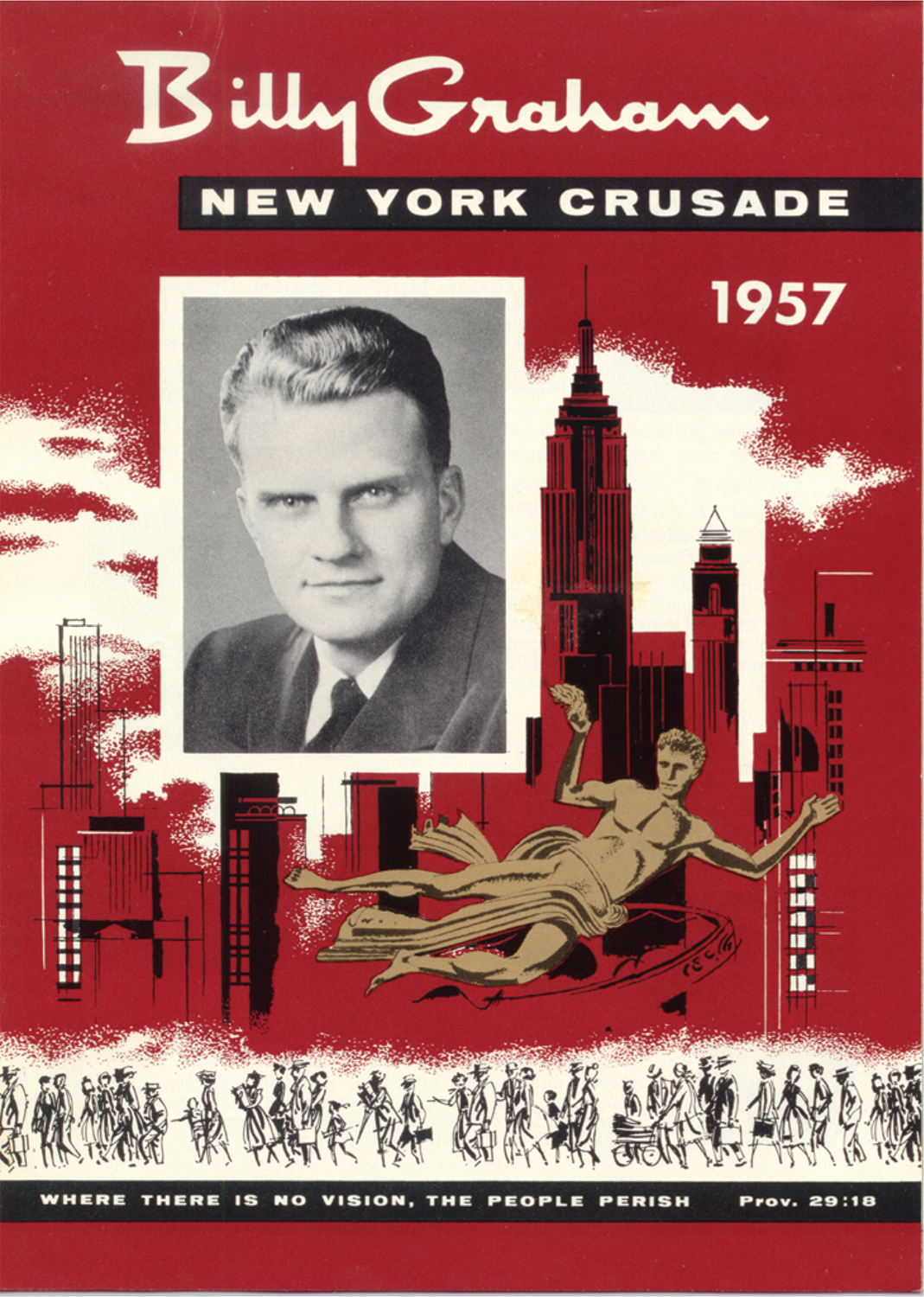The Revival of Domesticity and Religion

Evangelist Billy Graham Preaches in New York City Billy Graham, a young Baptist minister from North Carolina, electrified mass audiences, exhorting them to find salvation in Jesus Christ and to uphold Christian moral standards. Americans flocked to his crusades, even as he implicitly condemned their avid participation in consumerism as “materialistic, worldly, secular, greedy, and covetous.” Hundreds of thousands flocked to his New York Crusade in 1957, and millions watched on TV. Brochure image used with permission of Billy Graham Evangelistic Association. All rights reserved.
Despite married women’s growing employment, a dominant ideology celebrated traditional family life and conventional gender roles. Both popular culture and public figures defined the ideal family as a male bread-winner, a full-time homemaker, and three or four children. Writer and feminist Betty Friedan gave a name to the idealization of women’s domestic roles in her 1963 book The Feminine Mystique. Friedan criticized health professionals, scholars, advertisers, and public officials for assuming that biological differences dictated different roles for men and women. According to this feminine mystique that they promulgated, women should find fulfillment in devotion to their homes, families, and serving others. Not many women directly challenged these ideas, but writer Edith Stern maintained that “many arguments about the joys of housewifery have been advanced, largely by those who have never had to work at it.”
Although the glorification of domesticity clashed with women’s increasing employment, many Americans’ lives did embody the family ideal. Postwar prosperity enabled people to marry earlier and to have more children. In the midst of a general downward trend over the century, the American birthrate soared between 1945 and 1960, peaking in 1957 with 4.3 million births and producing the baby boom generation. Experts encouraged mothers to devote even more attention to child rearing, while they also urged fathers to cultivate family “togetherness” by spending more time with their children.
Interest in religion also surged in the 1950s. From 1940 to 1960, membership in churches and synagogues rose from 50 to 63 percent of all Americans. Polls reported that 95 percent of the population believed in God. Evangelism took on new life, most notably in the nationwide crusades of Baptist minister Billy Graham. Congress linked religion more closely to the state by adding “under God” to the pledge of allegiance and by requiring that “In God We Trust” be printed on all currency.
Religion helped to calm anxieties in the nuclear age, while ministers such as Graham made the Cold War a holy war, labeling communism “a great sinister anti-Christian movement masterminded by Satan.” Some critics questioned the depth of the religious revival, attributing the growth in church membership to a desire for conformity and a need for social outlets. One commentator noted that 53 percent of Americans could not name a single book of the Christian New Testament.
